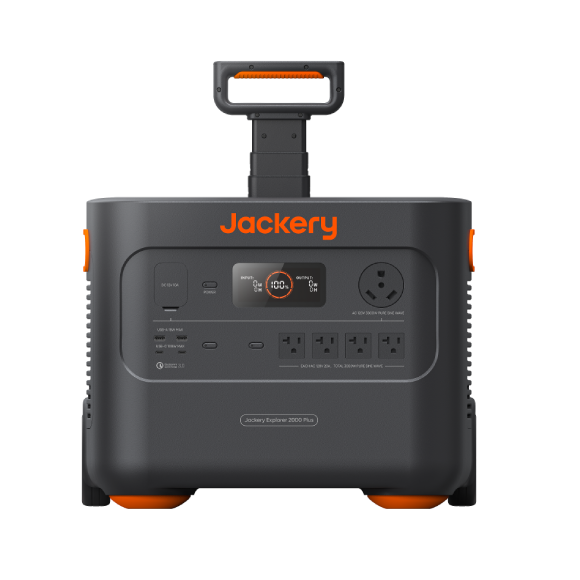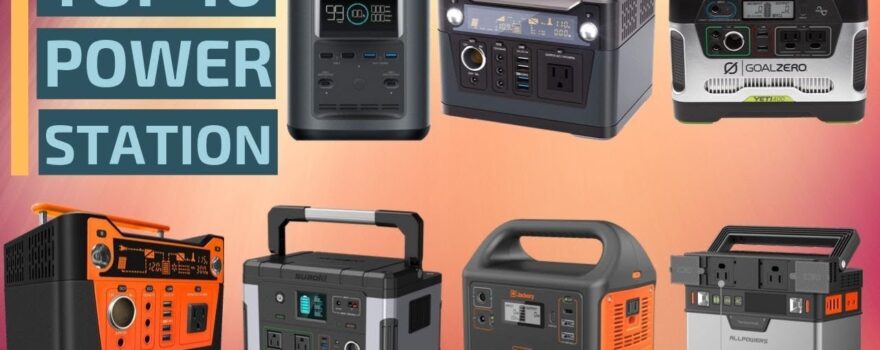
In an era where constant connectivity and mobility are essential, portable power stations have become increasingly significant in our daily lives. Whether it’s for outdoor activities, emergencies, or as backup power sources, these devices offer unparalleled convenience and reliability. This guide delves into the top portable power stations of 2023.All prices are in USD.
Jackery Explorer 2000 Plus – Best Overall Portable Power Station ($2,199)
The Jackery Explorer 2000 Plus, priced at $2,199, epitomizes excellence in portable power technology. This model is a powerhouse, boasting a high battery capacity that ensures long-lasting performance, making it ideal for a variety of uses, from outdoor adventures to emergency backup. What sets it apart is its blend of power and portability. Despite its robust capabilities, it remains relatively easy to transport, a crucial feature for those on the move. The fast charging capability is a game-changer, significantly reducing downtime and enhancing overall efficiency. Additionally, the Explorer 2000 Plus is equipped with advanced features like solar panel inputs and wireless charging, catering to the modern user’s needs. Its versatility makes it suitable for everything from powering a campsite to serving as a reliable backup during power outages.
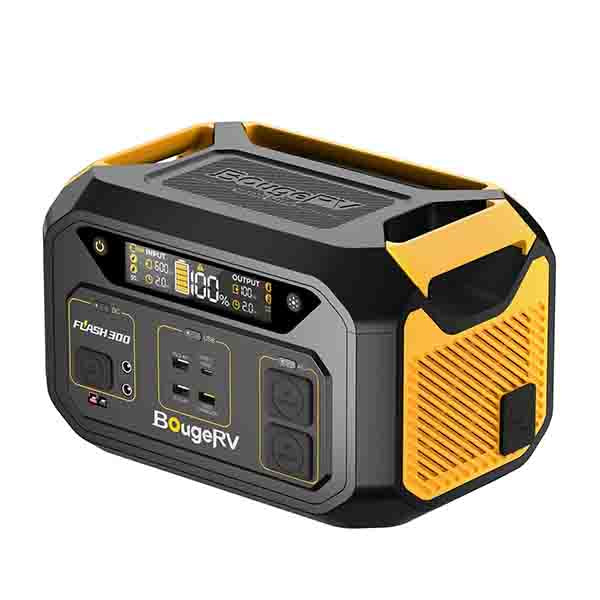
BougeRV Flash300 – Best Small Portable Power Station ($400)
The BougeRV Flash300, available for $400, is the epitome of compact power. This model is specifically designed for users who value portability without sacrificing performance. Its smaller size is perfect for light travel, camping, and outdoor activities where space is at a premium. Despite its compact frame, the Flash300 does not compromise on power, offering sufficient battery capacity to keep your devices charged. It also provides multiple charging options, including solar, making it a versatile choice for various settings. The affordability and practicality of the Flash300 make it an excellent option for those who need a reliable power source on the go, without the bulk and weight of larger models.

Jackery Explorer 1000 Plus – Best Midsize Portable Power Station ($1,199)
The Jackery Explorer 1000 Plus strikes a perfect balance between size and power, priced at $1,199. This midsize portable power station is a top contender for those who need a reliable power source that is neither too bulky nor too limited in capacity. It is equipped with features that cater to a wide range of needs, including USB ports for charging smaller devices and solar panel inputs for eco-friendly charging. The Explorer 1000 Plus is versatile enough to be used in various scenarios, from outdoor excursions to providing backup power during emergencies. Its combination of portability, power, and price makes it an attractive option for a broad spectrum of users.
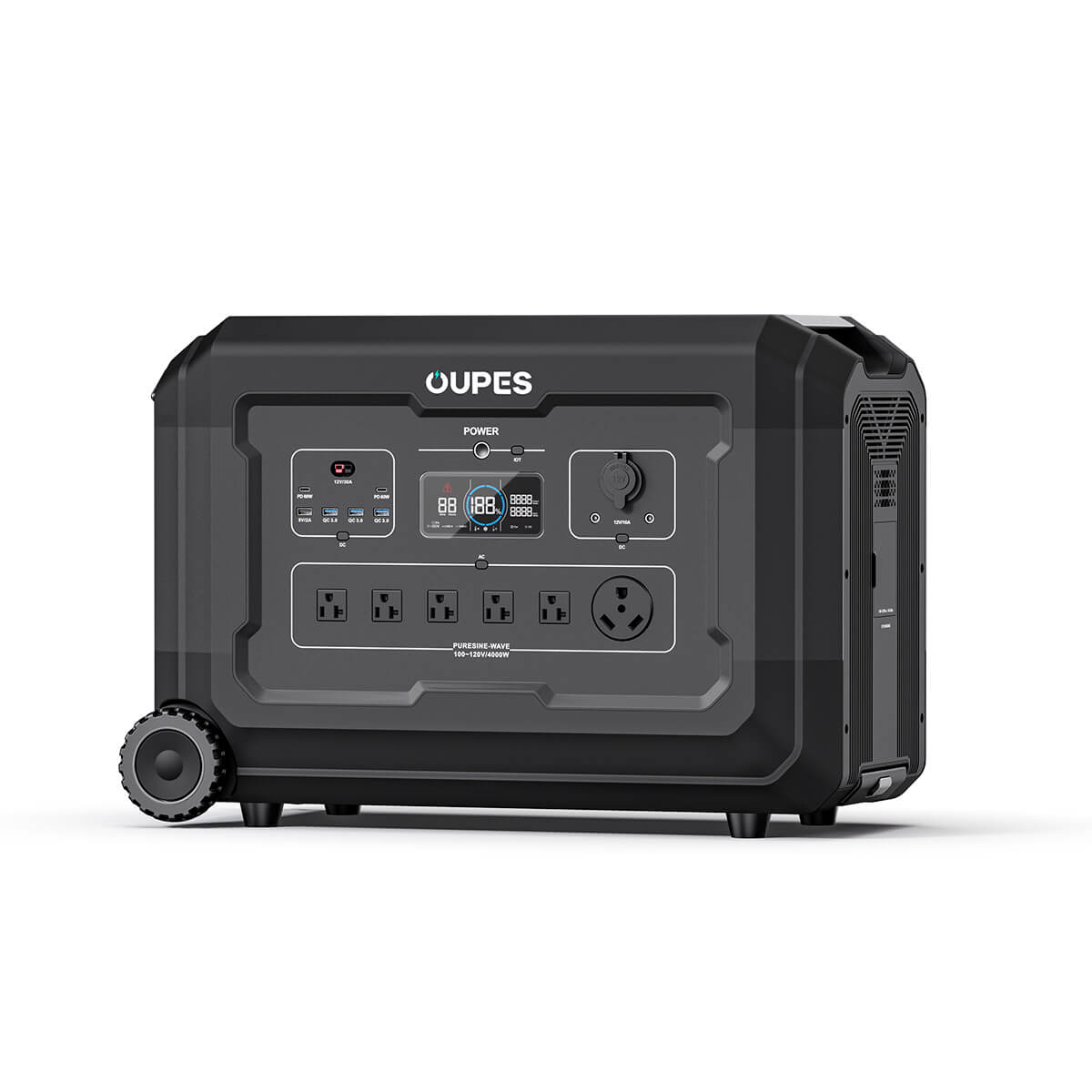
Oupes Mega 5 – Best Extra-Large Portable Power Station ($3,599)
For those requiring a substantial power supply, the Oupes Mega 5, priced at $3,599, is a formidable choice. This extra-large portable power station is designed to meet the most demanding power needs. With its large battery capacity, it is well-suited for situations that require a prolonged and robust power supply, such as emergency backup or extensive outdoor use. The build of the Oupes Mega 5 is as robust as its performance, ensuring durability and reliability in various conditions. Its higher price point reflects its superior capacity and capabilities, making it an ideal choice for users who need a high-performance power station for critical applications.
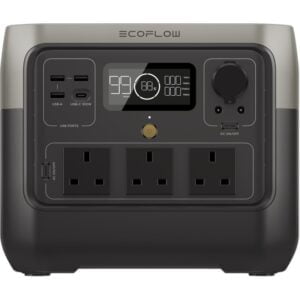
EcoFlow River 2 Pro – Best Budget Portable Power Station ($529)
The EcoFlow River 2 Pro, offered at an affordable $529, is the best budget-friendly option in the portable power station market. This model is a testament to the fact that quality and functionality need not be sacrificed for affordability. It provides a reliable power source with a user-friendly design, making it suitable for everyday use. The River 2 Pro is equipped with features that cater to the basic power needs of most users, offering a practical solution for those who need a dependable power station without a hefty investment. Its combination of price, performance, and convenience makes it an excellent choice for budget-conscious consumers looking for a quality portable power solution.
Revised In-Depth Review of Other Portable Power Stations
Portable power stations are increasingly vital for a variety of applications, from outdoor adventures to emergency power backup. This review reorders the previously discussed models, providing a fresh perspective on their capabilities and features.
- Togo Power Advance 346 (346Wh)
- Overview: Maintained its position as the top compact portable power station for over two years, thanks to its excellent features, strong performance, and competitive pricing.
- Strengths: Ideal for light outdoor activities or as an emergency backup for small devices, offering portability and efficiency.
- Bluetti EB3A (268Wh)
- Compact and Efficient: A practical choice for personal charging needs, especially when smaller battery packs don’t suffice.
- Features: Offers a good mix of features for a few days’ use, making it suitable for short trips or as a supplementary power source.
- GoSun PowerBank 1100 (1,100Wh)
- Charging Speed: Its major drawback is the extremely slow charging time, taking nearly twelve hours to fully charge.
- Price Point: At $1,299, it falls short of expectations for additional features like faster charging or wireless charging.
- EcoFlow River Max (576Wh)
- Affordability: Offers fast charging at a low cost per watt-hour, making it an affordable option.
- Capacity Discrepancy: However, it underdelivers on its advertised capacity, raising questions about the missing watt-hours.
- Energizer PPS700 (626Wh)
- Usable Capacity: Actual usable capacity is closer to 477Wh, despite the advertised 626Wh.
- Overall Performance: Falls into the average category, lacking standout features and having a lower tested capacity.
- EcoFlow Delta Pro (3600Wh)
- Capacity: Stands out for its massive 3.6kWh capacity, expandable up to 25kWh.
- Charging Options: Offers versatility with multiple charging methods, suitable for both outdoor and home backup use.
- Jackery Explorer 1500 Pro (1512Wh)
- Performance: Demonstrated good performance in usable capacity testing, scoring 90.4%.
- Charging: Charges rapidly in just two hours using AC-only charging, with the option to reduce this time further using solar panels.
- Jackery Explorer 1000 Pro (1,002Wh)
- Category: Large portable power station, with a capacity of 1,002Wh.
- Performance: Good overall performance, notable for its fast charging times and solid features, though overshadowed by its larger sibling, the 2000 Pro.
- BioLite BaseCharge 600 (622Wh)
- Usable Capacity: Offers 87% usable capacity with a Li-ion battery.
- Features: Average features, slightly slow charging, but includes wireless charging.
- Rockpals 300W
- Usable Capacity: Below the industry standard at 78%.
- Charge Speed: One of the faster small portable power stations, with decent features and a unique design.
- Goal Zero Yeti 200X
- Usable Capacity: Scored the lowest in usable capacity tests, around 65%.
- Build Quality: Solid construction, but there are better options in the small portable power station category.
- Oupes 600W (595Wh)
- Battery Type: Features a LiFePO4 battery.
- Performance: Average performance, slightly below par, with a potential for a more competitive pricing.
- Geneverse HomePower One (1,002Wh)
- Charging Speed: Second slowest overall to charge.
- Usable Capacity: Performed well with a 91% usable capacity rating.
- Jackery Explorer 240 (240Wh)
- Capacity Rating: Second best capacity rating among small power stations tested.
- Charging Speed: A bit slow to charge, but offers great value for its price.
- BigBlue Cellpowa 500 (537.6Wh)
- Performance: Better-than-average performance with competitive pricing.
- Overall Appeal: Lacks standout features but is a reliable option.
- Rocksolar Nomad RS650 (444Wh)
- Drawbacks: High price, low usable capacity, and slow charging time.
- Performance: Works adequately but is outperformed by other models in its category.
- Fanttik Evo 300 (299Wh)
- Category: A solid choice in the small power station segment.
- Display: Features a large, easy-to-read display, with average performance in charging and capacity tests.
- Bluetti EB55 (537Wh)
- Comparison: Overshadowed by other models from Bluetti.
- Value: Offers good performance but is outpriced by other options in the Bluetti range.
- Renogy 1000 (998.4Wh)
- Usable Capacity: About 80%, lower than expected compared to smaller Renogy models.
- Charging Speed: Fast enough for its capacity category.
- Dabbsson DBS2300 (2300Wh)
- Usable Capacity: Good at 87%.
- Features: Modular format, expandable up to 8.33kWh, charges relatively quickly.
- Anker Solix C1000 (1056Wh)
- Performance: Tested well in lab tests.
- Pricing: Currently $250 off with 30-day price matching.
- Bluetti AC180 (1152Wh)
- Usable Capacity: 88%.
- Charging Speed: Charges at 13.88 watt-hours per minute.
- Note: Does not support capacity expansion via external batteries.
- Encalife UAF550 (595Wh)
- Usable Capacity: Highest among the three Encalife models at 87%.
- Charging Speed: Slowest at 1.98 watt-hours per minute.
- Encalife UAF1100 (992Wh)
- Usable Capacity: Industry standard at about 84%.
- Charging Speed: Drops to 3.35 watt-hours per minute compared to larger models.
- Encalife YUE2000 (2048Wh)
- Usable Capacity: Lower at 73%.
- Charging Speed: Relatively quick at about 11.13 watt-hours per minute.
- Yoshino B4000SST (2611Wh)
- Usable Capacity: 87%, with fast charge speeds.
- Overall: A solid option, especially if found on sale.
- Jackery Explorer 700 Plus (680.96Wh)
- Usable Capacity: High at 88%.
- Charging Speed: Charges via AC in about 1.5 hours.
- Jackery Explorer 300 Plus (288Wh)
- Performance: Solid power option in a small form.
- Features: Basic but reliable.
- Deeno GT S1500 (1036Wh)
- Improvement: 20% more usable capacity and faster charging than the X1500 model.
- Capacity: Same as the previous model but with better performance.
- Enernova ETA Ultra (2150Wh)
- Usable Capacity: Best of the three Enernova models at 87%.
- Charging Speed: Charges in under two hours.
- Enernova ETA Pro (1050Wh)
- Usable Capacity: 83%, with faster charging than smaller models.
- Pricing: Slightly cheaper per watt-hour than its smaller sibling.
- Enernova ETA 288 (288Wh)
- Usable Capacity: About 81%.
- Charging Speed: Takes about 3 hours and 40 minutes to charge.
- 70mai Tera 1000 (1043.9Wh)
- Usable Capacity: Hits industry standard.
- Charging Speed: Takes 20 minutes less to charge nearly three times the capacity of the smaller model.
- 70mai Hiker 400 (378Wh)
- Usable Capacity: About 75%, below industry standard.
- Charging Speed: Takes about 4.5 hours to charge.
- Duracell Power 500 (515Wh)
- Performance: Slightly under average with questionable pricing.
- Bluetti AC200 MAX (2,048Wh)
- Usable Capacity: Slightly less than its predecessor.
- Features: Great features with modular expansion options.
- Ugreen Power Roam 600 (680Wh)
- Performance: Not great in tests but reasonably priced.
- Charging Speed: Quick, due to smaller capacity.
- Phyleko ENF1000S (1,024Wh)
- Build Quality: Sturdy with a large colorful display.
- Performance: Just under average in tests.
- EcoFlow Delta 2 Max (2,048Wh)
- Performance: Well in all tests, with significant expansion capability.
- Versatility: Blurs the line between portable power station and whole-home energy solution.
- BougeRV Fort 1000 (1,120Wh)
- Performance: Did well in tests but didn’t stand out.
- Features: Good for camping and outdoor use with flexible solar panel options.
- Pecron E2000LFP (1,920Wh)
- Features: More options than Delta Mini, suitable for camping.
- Modularity: Supports capacity expansion with external batteries.
- Monster Power Grid 300 (296Wh)
- Usable Capacity: Over 90%.
- Pricing: Potentially a bit high for its features.
- Oscal PowerMax 700 (666Wh)
- Features: Boasts numerous features including continuous power supply mode.
- Performance: Below average in tests.
- Deeno X1500 (1,036Wh)
- Usable Capacity: Low at 69.88%, offering less than advertised capacity.
- Value: Better options available for the price.
- Mango Power E (3,530Wh)
- Features: Loaded with features, including the ability to provide 240-volt service.
- Pricing: Most expensive on the list at $3,999.
- Jackery Explorer 3000 Pro (3,024Wh)
- Capacity: Large, suitable for those needing more battery capacity.
- Improvements: Includes wheels, telescoping handle, and an RV plug.
- Litheli PowerHUB B600 (562Wh)
- Usable Capacity: Good, with a competitive price.
- Battery Platform: Features U-Battery for use with various tools.
- Jackery Explorer 2000 Pro (2,160Wh)
- Performance: Known for its fast charging capability.
- Reliability: A dependable choice across the Jackery lineup.
- Anker Solix F2000 (2,048Wh)
- Features: Offers a wide range of features except for wireless charging.
- Performance: Good usable capacity and charge time.
- Runhood Rallye 600 (648Wh)
- Innovation: First modular style portable power station tested.
- Flexibility: Swappable batteries and standalone modules for versatility.
- Anker Solix F1200 (1,229Wh)
- UPS Mode: Notable for its fast switchover time in power outages.
- Pricing: Currently $300 off on Anker’s site.
- Zendure SuperBase Pro 2000 (2,096Wh)
- Battery Composition: First unit tested with Li-NMC battery.
- Features: High solar charging capacity and easy mobility.
- Renogy Phoenix 200 (189Wh)
- Usable Capacity: High at 96%.
- Value: Great for those new to portable power stations.
- BioLite BaseCharge 1500 (1,521Wh)
- Consistency: Similar performance to the 600 model but with larger capacity.
- Value: Good for those seeking a larger version of the 600 model.
- Geneverse HomePower One Pro (1,210Wh)
- Comparison: More expensive than the standard model with less usable capacity.
- Charging Speed: Faster than the standard version.
- Bluetti AC200P (2,000Wh)
- Status: Likely nearing end of product cycle, currently discounted.
- Previous Recognition: Former winner for “best large portable power station.”
- EcoFlow Delta 2 (1,024Wh)
- Comparison: Similar to Anker 555 PowerHouse but with lower usable capacity.
- Charging Speed: Faster than Anker model, with battery expansion capability.
- DaranEner NEO2000 (2,073.6Wh)
- Performance: Top tier in charge tests, average in usable capacity tests.
- Value: One of the lowest prices per watt-hour.
- Anker 555 PowerHouse (1,024Wh)
- Battery Type: LiFePO4, slower to charge but high usable capacity.
- Value: Attractive price for the number of watt-hours offered.
How portable power stations are tested
All portable power station manufacturers offer the anticipated watt-hour capacity of their devices. That translates to 240 watt-hours for the Jackery Explorer 240 and 576 watt-hours for the Ecoflow River Max. According to Bluetti AC200P, 2,000 watt-hours.
This implies that a gadget with a 1-watt output should live for around 240 hours when powered by the Jackery Explorer 240. With the Bluetti generator, you would obtain an astounding 2,000 hours in comparison to 576 hours with the Ecoflow model. You could use that for over three months! As a point of comparison, the power consumption of a 3-quart Instant Pot, a USB-C iPhone charger, and a regular microwave ranges from 600 to 1,200 watts, depending on the model.
These days, we focus on two primary performance metrics: discharge capacity and charge time, for the portable power stations. Capacity of a power plant ought to be obvious. The watt-hour rating of a gadget should allow you to make an informed decision depending on your needs. And you can usually accomplish that. However, I’ve discovered that you usually won’t get the full capacity rating as useable power.
Numerous variables can influence this, most of which are related to the internal construction of the unit by the manufacturer in order to control its charged capacity. Power is used to power the devices’ many indicator lights and readable led panels, however this power is often very little. In fact, some of the bigger models even have their own operating systems, so it’s practically like having an inside mini-computer. Other devices may contain power-saving mechanisms that lower bulk power output when the battery gets close to empty.
We attach a certain quantity of 10,000 lumen, 110 watt LED work lights to each unit in order to conduct our capacity testing (the quantity of work lights is determined by the total watt-hour rating of the unit under test, or UUT). Using external measuring tools or, if available, the UUT’s own measurements, we log the output voltage and watts. With this data in hand, we can use math to delve into an overwhelming amount of information on the UUT’s performance. However, the primary data point we examine here is the observed capacity, as determined by our measurements, in contrast to the UUT’s declared capacity.
Percentage of each portable power station we tested’s useable battery capacity
That proportion never exceeds 100% in any scenario. (According to the majority of manufacturers, you should estimate consumption at 85% of capacity provided.) Two of our lesser models, the Togo 350 and the Jackery Explorer 240, both registered at 98% capacity. In general, the midsize units had poor performance. Larger units performed better; the Bluetti AC200P had the best score of nearly 96%. Now, the figures appear significantly different if you take at face value both the advertised capacity of a unit and our work light wattage rating of 110 watts.
To simplify the arithmetic, we will link four 110-watt lights to the GoSun PowerBank 1100, for instance. Now that the GoSun’s capacity of 1,100 is divided by 440, the load rating is 440 watts, or 2.5. 2.5 hours of usage is what we would anticipate. This unit actually ran for two hours and fifty minutes, or 113% of its total capacity. Fantastic! Correct? We seem to be lacking a few crucial elements. Our actual expected run time is 3 hours, 8 minutes, which lowers the capacity rating to 90%. Without getting into a long(er) explanation of how to more accurately measure power, the fact that this unit has an output of 110 volts AC (compared to 120VAC) and the actual output wattage to the four lights is 352 watts.
Here are the tested units’ computed capacity statistics. Regarding these figures, keep in mind that the Oupes statistics may be a little incorrect. At 9%, the device switched off the lights. After a while, it would let me switch on the lights once more, but only temporarily. Before the device would stop powering the lights for longer than a few seconds at a time, I had to go through this procedure at least twenty times.
Knowing your true capacity figures might be almost as crucial as charging performance. Knowing how long it will take to charge your gadget is helpful, particularly if you’re pressed for time or need to charge it rapidly for any reason. Will an hour be needed? Just two? How about ten? or twelve? (That’s a real figure based on our experiments.)
With regard to charging performance, we present three data points. After plugging each device into the AC to charge it, we time how long it takes for each unit to charge to 50%, 80%, and 100%. The least amount of electricity you should usually have is half-full, especially from the smaller units. The “magic number” for a lot of rechargeable batteries is 80%.
To put it simply, picture a swimming pool that can accommodate 100 people, with each individual taking up 1% of the entire area. Not much actually worries you when you initially start charging and that first person jumps in. You are the only one here, so go ahead and splash about, dive, do anything you want. It now becomes a little bit more confusing and packed as we add additional folks. There’s less space for people. The next person will take a few more seconds to consider their entry carefully once there are eighty people in the pool, rather than just leaping in and praying nobody is in the way and causing trouble.
It is intentional for each manufacturer to slow down production in their own method, so you won’t witness identical performance drops from one to the next. Furthermore, in keeping with the analogy, the 100th individual to enter the pool may occasionally be extremely sluggish, entering the pool several times slower than any of his predecessors.
Examine the billing information. The charge times are given in minutes, along with an additional “watt-hours-per-minute” measurement that I alone requested. The charge rate will often be quite steady between 0% and 50% as well as between 50 and 80% before slowing down from 80% to 100%.
Contact First Solution Group today to get started on your journey towards a cleaner, more sustainable future for Singapore. Don’t miss out on this opportunity to be part of the renewable energy movement.
Additional Resources:
Solar Panel Installation in Singapore
Solar Panels for Condos
Solar Panel Price
Solar Panel Subsidies
